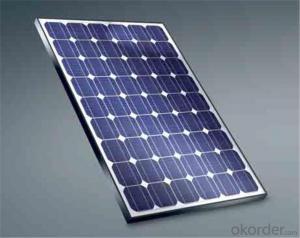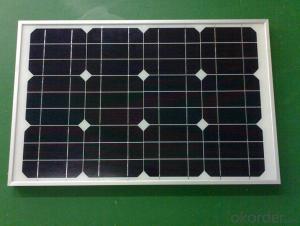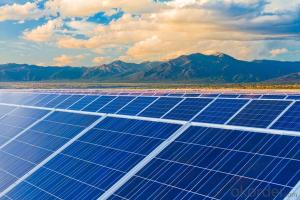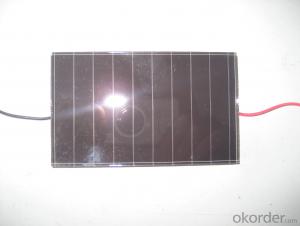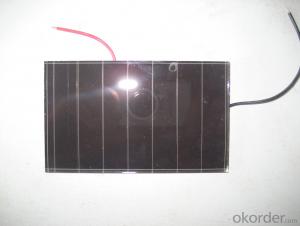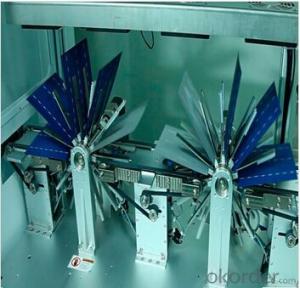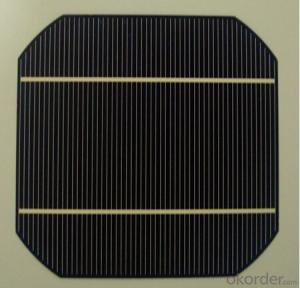240W Solar Panels for Home Use Solar Power System
- Loading Port:
- China main port
- Payment Terms:
- TT OR LC
- Min Order Qty:
- 10000 watt
- Supply Capability:
- 20000000 watt/month
OKorder Service Pledge
OKorder Financial Service
You Might Also Like
Destription:
Solar panel refers to a panel designed to absorb the sun's rays as a source of energy for generating electricity or heating. A PV module is a packaged, connected assembly of typically 6×10 solar cells. Solar PV panels constitute the solar array of a photovoltaic system that generates and supplies solar electricity in commercial and residential applications.
Main Characteristic
1.Manufactured according to international quality and Environment Management
System (ISO9001, ISO14001)
2. By the high transmittance, low iron tempered glass, anti-aging of the EVA(polyethylene - vinyl acetate), high-performance crystalline silicon solar cells, good Weather resistance TPT (fluoroplastics composite membrane) by pyramid , has a good Weather resistance and anti-UV, hail, water-proof capacity.
3. OEM and customerized package are accepted
4. High efficiency crystalline silicon solar cells
Quality warranty
1.10 years limited warranty on material and workmanship
2. more than 90% power output in 10 years
3. more than 80% power output in 25 years
Product show


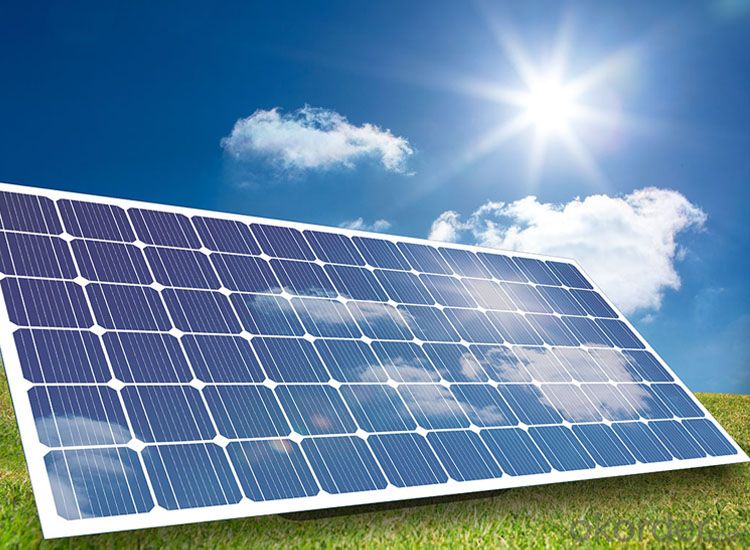


- Q:How much does a solar silicon wafer cost?
- The cost of a solar silicon wafer can vary depending on factors such as size, quality, and market conditions. On average, a solar silicon wafer can range from $0.10 to $0.50 per watt.
- Q:How is a microinverter integrated into a solar silicon wafer?
- A microinverter is not directly integrated into a solar silicon wafer. Instead, it is typically attached to each individual solar panel in a solar array. This allows for the conversion of the direct current (DC) produced by the solar panel into alternating current (AC) for use in homes or businesses, improving overall energy efficiency and performance.
- Q:What is the role of solar silicon wafers in reducing air pollution?
- Solar silicon wafers play a crucial role in reducing air pollution by enabling the production of solar panels, which generate clean and renewable energy. These wafers, made from purified silicon, are the key component of solar cells that capture sunlight and convert it into electricity. By harnessing solar power, we can reduce our reliance on fossil fuels, which are major contributors to air pollution through emissions of greenhouse gases and harmful pollutants. Therefore, the use of solar silicon wafers helps to mitigate air pollution by providing a sustainable and environmentally friendly alternative for electricity generation.
- Q:How thick is a solar silicon wafer typically?
- A solar silicon wafer is typically around 180 to 200 micrometers thick.
- Q:The higher the resistivity of silicon wafers, the better?!!! 1 experts please answer me!
- Low resistivity is helpful to improve the opening pressure, high resistivity and help to improve the short-circuit current, the best match between the two is about 1 -3! Own understanding!
- Q:How are solar silicon wafers tested for electrical contact resistance?
- Solar silicon wafers are tested for electrical contact resistance through a process known as the four-point probe measurement technique. This involves placing four probes in a specific configuration on the surface of the wafer and applying a known current through two of the probes while measuring the resulting voltage drop across the other two probes. By analyzing the voltage and current data, the electrical contact resistance can be accurately determined.
- Q:What is the effect of surface roughness on the performance of solar silicon wafers?
- The effect of surface roughness on the performance of solar silicon wafers is significant. A rough surface increases the likelihood of light scattering, reducing the efficiency of light absorption and conversion into electricity. It can also lead to increased recombination of charge carriers, resulting in lower overall power output. Therefore, minimizing surface roughness is crucial for maximizing the efficiency and performance of solar silicon wafers.
- Q:How are solar silicon wafers affected by light-induced degradation mechanisms?
- Solar silicon wafers are affected by light-induced degradation mechanisms in various ways. One significant effect is the formation of defects, such as boron-oxygen complexes and iron impurities, which can reduce the efficiency of the solar cell. These defects are primarily caused by the interaction of light with impurities or dopants present in the silicon material. Additionally, exposure to sunlight can also lead to the creation of dislocations and stacking faults, further degrading the performance of the silicon wafers. Overall, light-induced degradation mechanisms can significantly impact the long-term efficiency and reliability of solar cells.
- Q:What is the expected efficiency improvement for bifacial solar silicon wafers?
- The expected efficiency improvement for bifacial solar silicon wafers varies depending on several factors such as the design of the module, installation conditions, and the overall system setup. However, studies have shown that bifacial solar silicon wafers can provide an efficiency improvement of around 10% to 30% compared to traditional monofacial solar panels.
- Q:What is a silicon wafer cutting edge material?
- Because the cutting edge material particles have very sharp edges, and the hardness is far greater than the silicon rod or silicon ingot hardness, so the silicon rod or silicon ingot and steel wire contact area gradually by the cutting edge material particle grinding off, so as to achieve the purpose of cutting.
1. Manufacturer Overview |
|
|---|---|
| Location | |
| Year Established | |
| Annual Output Value | |
| Main Markets | |
| Company Certifications | |
2. Manufacturer Certificates |
|
|---|---|
| a) Certification Name | |
| Range | |
| Reference | |
| Validity Period | |
3. Manufacturer Capability |
|
|---|---|
| a)Trade Capacity | |
| Nearest Port | |
| Export Percentage | |
| No.of Employees in Trade Department | |
| Language Spoken: | |
| b)Factory Information | |
| Factory Size: | |
| No. of Production Lines | |
| Contract Manufacturing | |
| Product Price Range | |
Send your message to us
240W Solar Panels for Home Use Solar Power System
- Loading Port:
- China main port
- Payment Terms:
- TT OR LC
- Min Order Qty:
- 10000 watt
- Supply Capability:
- 20000000 watt/month
OKorder Service Pledge
OKorder Financial Service
Similar products
New products
Hot products
Related keywords
